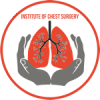Aspergilloma, also known as a fungus ball in the lungs, is a condition caused by the colonization of the lung cavities by the Aspergillus fungus. While treatment is essential to manage the symptoms and prevent the fungus from spreading, it is crucial to be aware of the potential complications that can arise during the treatment process. In this blog post, we will explore the possible complications of aspergilloma treatment, shedding light on the risks and considerations that patients and healthcare providers should be mindful of to ensure the best possible outcomes.
1. Worsening Lung Infection
One of the primary concerns during aspergilloma treatment is the risk of a worsening lung infection. As the Aspergillus fungus can invade the lung cavities, it can lead to the formation of new aspergillomas or the enlargement of existing ones. This progression can result in persistent symptoms, including coughing, chest pain, and hemoptysis (coughing up blood).
Antifungal medications are often prescribed to combat the fungal infection, but in some cases, the fungus may develop resistance to the drugs, making treatment more challenging. Additionally, individuals with weakened immune systems, such as those with underlying lung diseases or immunosuppressive conditions, may be more susceptible to recurrent or severe infections.
2. Allergic Reactions to Antifungal Medications
Antifungal medications are a standard treatment for aspergilloma, aiming to control the fungal growth and alleviate symptoms. However, these medications can sometimes lead to allergic reactions in some individuals. Allergic responses may manifest as skin rashes, itching, swelling, or more severe symptoms, such as difficulty breathing and anaphylaxis.
Patients undergoing antifungal treatment should be closely monitored for any signs of allergic reactions. In case of an allergy, alternative medications may need to be considered, and immediate medical attention should be sought to manage the reaction effectively.
3. Respiratory Complications after Surgery
Surgical intervention is an option for aspergilloma treatment, especially when the fungus ball causes significant lung damage or when antifungal therapy is not effective. While surgery aims to remove the aspergilloma and affected lung tissue, it comes with inherent risks, including respiratory complications.
Post-surgery, patients may experience difficulties in breathing, pain, and potential complications such as pneumothorax (collapsed lung) or infection. Although these complications are relatively rare, healthcare providers take necessary precautions to minimize the risks and ensure a safe recovery.
4. Formation of New Aspergillomas
Even after successful treatment and removal of the initial aspergilloma, there remains a risk of developing new aspergillomas in the lungs. Aspergillus spores are airborne and can be inhaled, leading to the colonization of other lung cavities.
To reduce the likelihood of new aspergillomas forming, it is essential for patients to take steps to minimize exposure to mold and fungal spores in their environment. This may include maintaining a clean and dry living space, using air purifiers, and avoiding environments with high mold concentrations.
5. Hemoptysis and Airway Bleeding
Hemoptysis, or coughing up blood, can occur as a complication of aspergilloma treatment. The presence of the fungus ball in the lung cavity can erode blood vessels, leading to minor or severe bleeding. While small episodes of hemoptysis may not be a significant concern, severe bleeding can be life-threatening and requires immediate medical attention.
To manage hemoptysis, patients may be advised to avoid activities that could exacerbate bleeding, such as vigorous coughing, and may need to undergo interventions, such as bronchial artery embolization, to control bleeding from affected blood vessels.
6. Recurrence of Aspergilloma
In some cases, aspergilloma may recur even after successful treatment. Recurrence can happen due to incomplete removal of the fungus ball during surgery or the persistence of underlying conditions that predispose the individual to fungal colonization.
To minimize the risk of recurrence, it is essential to address any underlying lung conditions, maintain good lung health, and adhere to the prescribed treatment plan, including regular follow-ups with healthcare providers.
Conclusion
Aspergilloma treatment is essential to manage symptoms, prevent complications, and improve the quality of life for affected individuals. However, it is crucial to be aware of the potential complications that may arise during the treatment process. Worsening lung infections, allergic reactions to medications, respiratory complications after surgery, formation of new aspergillomas, hemoptysis, and the possibility of recurrence are among the risks to consider.
Additionally, the formation of new aspergillomas, hemoptysis, and the possibility of recurrence are important considerations that patients and healthcare providers must be vigilant about. Timely intervention, regular monitoring, and proper management of these potential complications are vital to ensuring the best possible outcomes for individuals undergoing treatment for aspergilloma.
If you suspect you have aspergilloma or are undergoing treatment, consult with a qualified healthcare professional to discuss the potential complications and develop a personalized treatment plan that addresses your specific needs and medical history.






